Drishti Sharma
Behind Maya: Building a Multilingual Vision Language Model
May 15, 2025

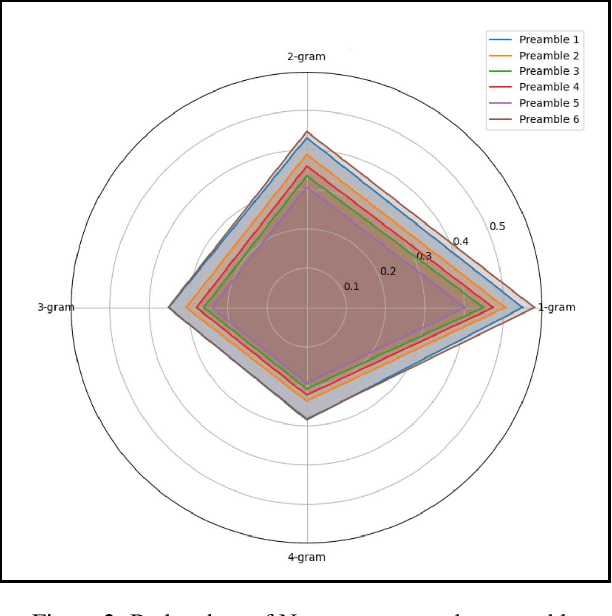

Abstract:In recent times, we have seen a rapid development of large Vision-Language Models (VLMs). They have shown impressive results on academic benchmarks, primarily in widely spoken languages but lack performance on low-resource languages and varied cultural contexts. To address these limitations, we introduce Maya, an open-source Multilingual VLM. Our contributions are: 1) a multilingual image-text pretraining dataset in eight languages, based on the LLaVA pretraining dataset; and 2) a multilingual image-text model supporting these languages, enhancing cultural and linguistic comprehension in vision-language tasks. Code available at https://github.com/nahidalam/maya.
Robust and Fine-Grained Detection of AI Generated Texts
Apr 16, 2025Abstract:An ideal detection system for machine generated content is supposed to work well on any generator as many more advanced LLMs come into existence day by day. Existing systems often struggle with accurately identifying AI-generated content over shorter texts. Further, not all texts might be entirely authored by a human or LLM, hence we focused more over partial cases i.e human-LLM co-authored texts. Our paper introduces a set of models built for the task of token classification which are trained on an extensive collection of human-machine co-authored texts, which performed well over texts of unseen domains, unseen generators, texts by non-native speakers and those with adversarial inputs. We also introduce a new dataset of over 2.4M such texts mostly co-authored by several popular proprietary LLMs over 23 languages. We also present findings of our models' performance over each texts of each domain and generator. Additional findings include comparison of performance against each adversarial method, length of input texts and characteristics of generated texts compared to the original human authored texts.
Improving Multilingual Capabilities with Cultural and Local Knowledge in Large Language Models While Enhancing Native Performance
Apr 13, 2025



Abstract:Large Language Models (LLMs) have shown remarkable capabilities, but their development has primarily focused on English and other high-resource languages, leaving many languages underserved. We present our latest Hindi-English bi-lingual LLM \textbf{Mantra-14B} with ~3\% average improvement in benchmark scores over both languages, outperforming models twice its size. Using a curated dataset composed of English and Hindi instruction data of 485K samples, we instruction tuned models such as Qwen-2.5-14B-Instruct and Phi-4 to improve performance over both English and Hindi. Our experiments encompassing seven different LLMs of varying parameter sizes and over 140 training attempts with varying English-Hindi training data ratios demonstrated that it is possible to significantly improve multilingual performance without compromising native performance. Further, our approach avoids resource-intensive techniques like vocabulary expansion or architectural modifications, thus keeping the model size small. Our results indicate that modest fine-tuning with culturally and locally informed data can bridge performance gaps without incurring significant computational overhead. We release our training code, datasets, and models under mit and apache licenses to aid further research towards under-represented and low-resource languages.
Kaleidoscope: In-language Exams for Massively Multilingual Vision Evaluation
Apr 09, 2025Abstract:The evaluation of vision-language models (VLMs) has mainly relied on English-language benchmarks, leaving significant gaps in both multilingual and multicultural coverage. While multilingual benchmarks have expanded, both in size and languages, many rely on translations of English datasets, failing to capture cultural nuances. In this work, we propose Kaleidoscope, as the most comprehensive exam benchmark to date for the multilingual evaluation of vision-language models. Kaleidoscope is a large-scale, in-language multimodal benchmark designed to evaluate VLMs across diverse languages and visual inputs. Kaleidoscope covers 18 languages and 14 different subjects, amounting to a total of 20,911 multiple-choice questions. Built through an open science collaboration with a diverse group of researchers worldwide, Kaleidoscope ensures linguistic and cultural authenticity. We evaluate top-performing multilingual vision-language models and find that they perform poorly on low-resource languages and in complex multimodal scenarios. Our results highlight the need for progress on culturally inclusive multimodal evaluation frameworks.
Maya: An Instruction Finetuned Multilingual Multimodal Model
Dec 10, 2024

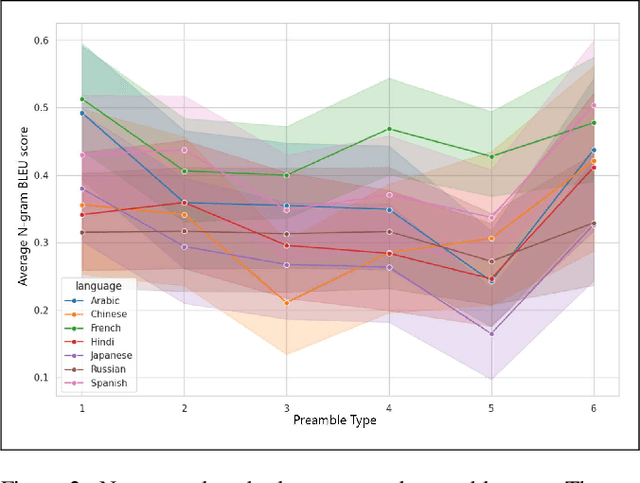
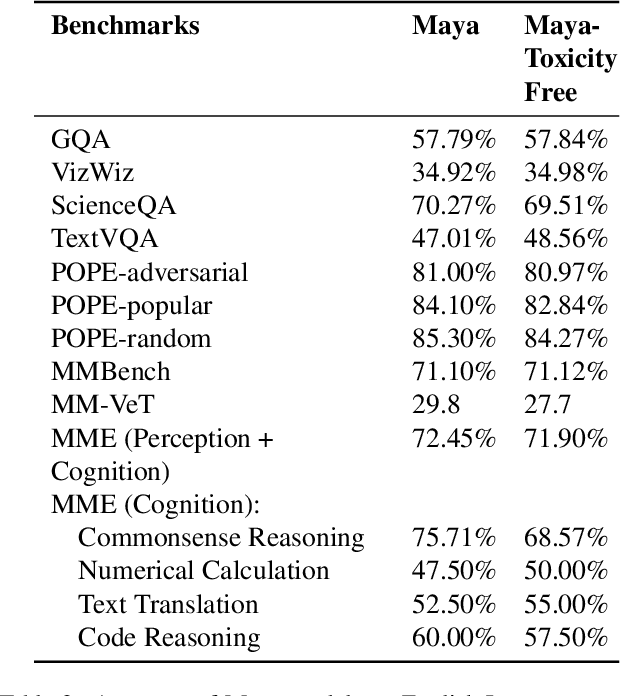
Abstract:The rapid development of large Vision-Language Models (VLMs) has led to impressive results on academic benchmarks, primarily in widely spoken languages. However, significant gaps remain in the ability of current VLMs to handle low-resource languages and varied cultural contexts, largely due to a lack of high-quality, diverse, and safety-vetted data. Consequently, these models often struggle to understand low-resource languages and cultural nuances in a manner free from toxicity. To address these limitations, we introduce Maya, an open-source Multimodal Multilingual model. Our contributions are threefold: 1) a multilingual image-text pretraining dataset in eight languages, based on the LLaVA pretraining dataset; 2) a thorough analysis of toxicity within the LLaVA dataset, followed by the creation of a novel toxicity-free version across eight languages; and 3) a multilingual image-text model supporting these languages, enhancing cultural and linguistic comprehension in vision-language tasks. Code available at https://github.com/nahidalam/maya.
1-800-SHARED-TASKS at RegNLP: Lexical Reranking of Semantic Retrieval (LeSeR) for Regulatory Question Answering
Dec 08, 2024



Abstract:This paper presents the system description of our entry for the COLING 2025 RegNLP RIRAG (Regulatory Information Retrieval and Answer Generation) challenge, focusing on leveraging advanced information retrieval and answer generation techniques in regulatory domains. We experimented with a combination of embedding models, including Stella, BGE, CDE, and Mpnet, and leveraged fine-tuning and reranking for retrieving relevant documents in top ranks. We utilized a novel approach, LeSeR, which achieved competitive results with a recall@10 of 0.8201 and map@10 of 0.6655 for retrievals. This work highlights the transformative potential of natural language processing techniques in regulatory applications, offering insights into their capabilities for implementing a retrieval augmented generation system while identifying areas for future improvement in robustness and domain adaptation.
SeQwen at the Financial Misinformation Detection Challenge Task: Sequential Learning for Claim Verification and Explanation Generation in Financial Domains
Nov 30, 2024Abstract:This paper presents the system description of our entry for the COLING 2025 FMD challenge, focusing on misinformation detection in financial domains. We experimented with a combination of large language models, including Qwen, Mistral, and Gemma-2, and leveraged pre-processing and sequential learning for not only identifying fraudulent financial content but also generating coherent, and concise explanations that clarify the rationale behind the classifications. Our approach achieved competitive results with an F1-score of 0.8283 for classification, and ROUGE-1 of 0.7253 for explanations. This work highlights the transformative potential of LLMs in financial applications, offering insights into their capabilities for combating misinformation and enhancing transparency while identifying areas for future improvement in robustness and domain adaptation.
INCLUDE: Evaluating Multilingual Language Understanding with Regional Knowledge
Nov 29, 2024



Abstract:The performance differential of large language models (LLM) between languages hinders their effective deployment in many regions, inhibiting the potential economic and societal value of generative AI tools in many communities. However, the development of functional LLMs in many languages (\ie, multilingual LLMs) is bottlenecked by the lack of high-quality evaluation resources in languages other than English. Moreover, current practices in multilingual benchmark construction often translate English resources, ignoring the regional and cultural knowledge of the environments in which multilingual systems would be used. In this work, we construct an evaluation suite of 197,243 QA pairs from local exam sources to measure the capabilities of multilingual LLMs in a variety of regional contexts. Our novel resource, INCLUDE, is a comprehensive knowledge- and reasoning-centric benchmark across 44 written languages that evaluates multilingual LLMs for performance in the actual language environments where they would be deployed.
1-800-SHARED-TASKS @ NLU of Devanagari Script Languages: Detection of Language, Hate Speech, and Targets using LLMs
Nov 11, 2024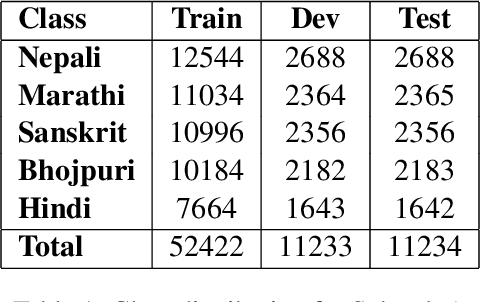
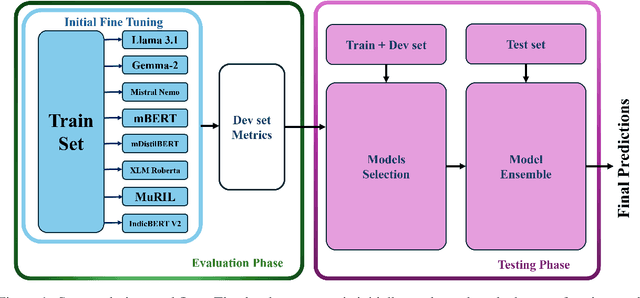
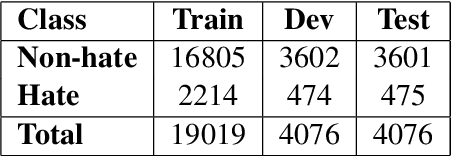
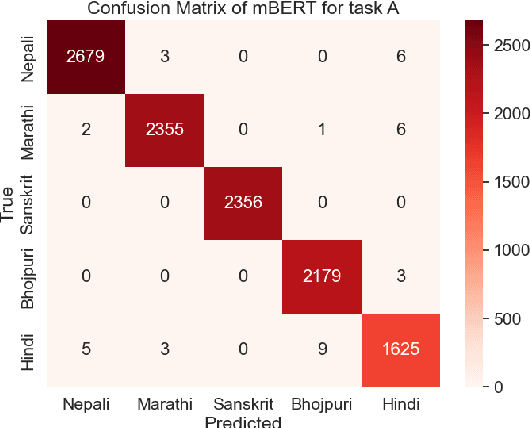
Abstract:This paper presents a detailed system description of our entry for the CHiPSAL 2025 shared task, focusing on language detection, hate speech identification, and target detection in Devanagari script languages. We experimented with a combination of large language models and their ensembles, including MuRIL, IndicBERT, and Gemma-2, and leveraged unique techniques like focal loss to address challenges in the natural understanding of Devanagari languages, such as multilingual processing and class imbalance. Our approach achieved competitive results across all tasks: F1 of 0.9980, 0.7652, and 0.6804 for Sub-tasks A, B, and C respectively. This work provides insights into the effectiveness of transformer models in tasks with domain-specific and linguistic challenges, as well as areas for potential improvement in future iterations.
M-RewardBench: Evaluating Reward Models in Multilingual Settings
Oct 20, 2024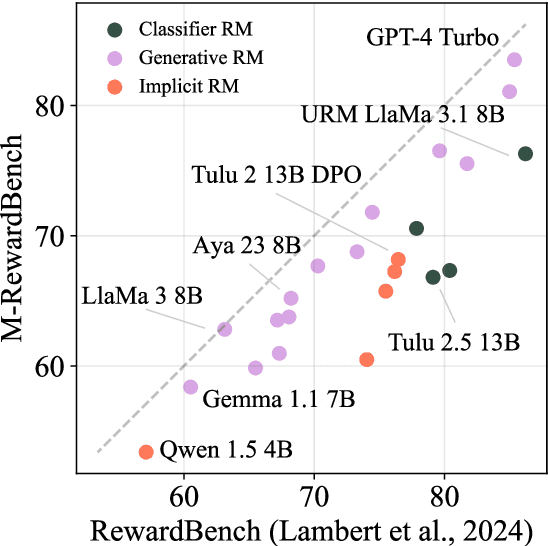



Abstract:Reward models (RMs) have driven the state-of-the-art performance of LLMs today by enabling the integration of human feedback into the language modeling process. However, RMs are primarily trained and evaluated in English, and their capabilities in multilingual settings remain largely understudied. In this work, we conduct a systematic evaluation of several reward models in multilingual settings. We first construct the first-of-its-kind multilingual RM evaluation benchmark, M-RewardBench, consisting of 2.87k preference instances for 23 typologically diverse languages, that tests the chat, safety, reasoning, and translation capabilities of RMs. We then rigorously evaluate a wide range of reward models on M-RewardBench, offering fresh insights into their performance across diverse languages. We identify a significant gap in RMs' performances between English and non-English languages and show that RM preferences can change substantially from one language to another. We also present several findings on how different multilingual aspects impact RM performance. Specifically, we show that the performance of RMs is improved with improved translation quality. Similarly, we demonstrate that the models exhibit better performance for high-resource languages. We release M-RewardBench dataset and the codebase in this study to facilitate a better understanding of RM evaluation in multilingual settings.
 Add to Chrome
Add to Chrome Add to Firefox
Add to Firefox Add to Edge
Add to Edge